WARNING: Be careful when replacing a punctured wheel. Perhaps it was pierced by intruders to steal valuables from the car while you are replacing it.
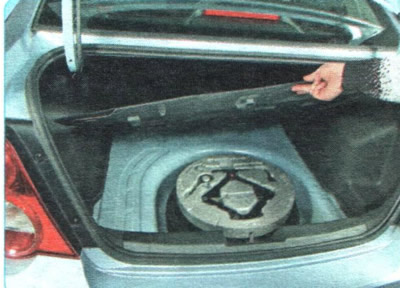
1. Open the trunk (it contains everything you need to change a wheel) and remove the carpet from the floor of the trunk (or lift its back).

2. Remove the tool cassette from the spare wheel well.
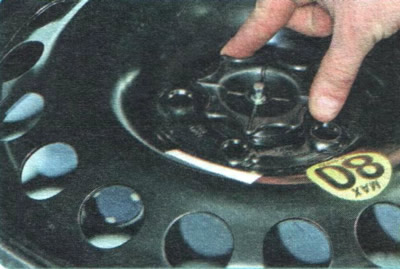
3. Unscrew the spare wheel lock...
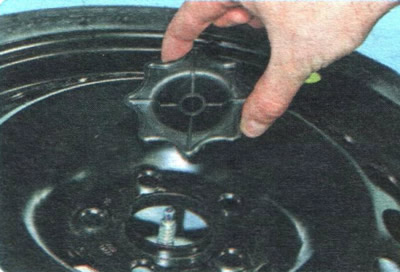
4.... and remove the retainer.
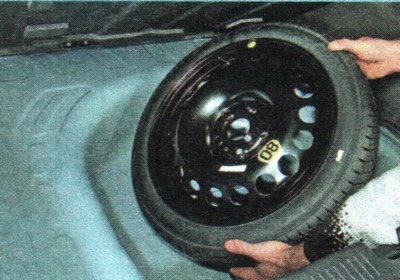
5. Remove the spare wheel from the trunk and place it next to the wheel to be replaced.
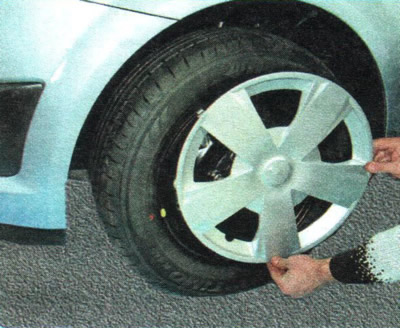
6. On a vehicle equipped with forged wheels, remove the wheel trim against the force of the retaining spring.
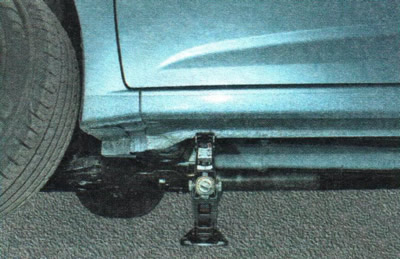
7. Engage 1st gear and parking brake. Place a jack under the vehicle next to the tire to be changed (see «Jacking»).
GOOD ADVICE: To avoid getting dirty when changing a wheel, wear gloves and overalls, if your car has them.
8. On the opposite side, the car must be fixed by placing wheel chocks under the front and rear wheels so that the raised car cannot move forward or backward.
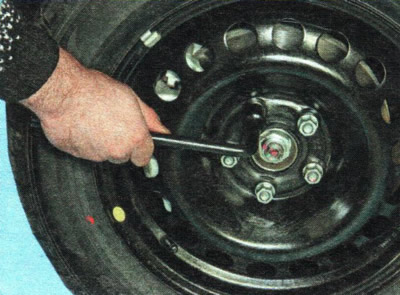
9. Using a jack, slightly raise the car, but so that the wheel requiring replacement does not come off the road. Use a wheel wrench to loosen the five wheel nuts.
USEFUL ADVICE: In order to make it easier to unscrew the wheel nuts, you can use your foot instead of your hands, stepping on the handle of the wheel wrench from above.
To make it easier to loosen the nuts, we recommend purchasing a special wheel wrench with a telescopic handle. It is convenient to work with a cross-shaped balloon wrench.
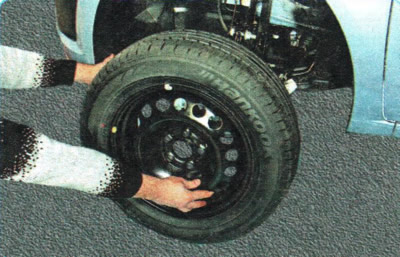
10. Raise the car with a jack so that the wheel is off the road, then completely unscrew the nuts and remove the wheel.
WARNINGS: Try to keep the car as little time as possible in a suspended state with the wheel removed. Raise the vehicle with a jack only to the height necessary to remove and install the wheel.
If working on soft ground, place a thick board under the base of the jack. Do not use bricks for this purpose - they break easily, and the car can fall off the jack, seriously injuring you.
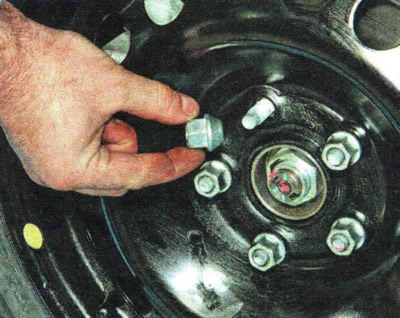
11. Install the spare wheel instead of the removed one, screw the fixing nuts up to the stop, but do not tighten them.
WARNING: When screwing on the nuts, make sure that their tapered parts are aligned with the tapered surfaces of the holes in the wheel rim, otherwise the nuts will loosen during movement, resulting in the loss of the wheel.
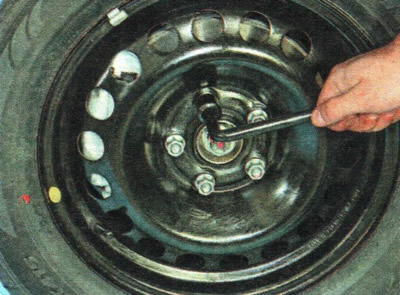
12. Lower the car and finally tighten nuts. Tighten the wheel nuts through one around the circumference. To avoid damage to the wheel rim, do not attempt to «hold out» wheel nuts by pressing the wrench handle with your foot.
USEFUL ADVICE: In order to feel the necessary tightening torque of the wheel nut, first use a torque wrench. The moment of an inhaling of nuts of fastening of a wheel of 90 Н·м.
Do not lubricate the threaded part of the fastening studs - this can lead to self-loosening of the nuts while the vehicle is moving. It is allowed to lubricate the conical part of the nuts with a thin layer of grease.
13. Install the decorative cap.
14. Before you continue driving, be sure to check the air pressure in the tire of the installed wheel and, if necessary, bring it to normal.
USEFUL TIPS: Tubeless tires are installed on the car. If you do not have enough tire mounting skills, we advise you not to try to do this work yourself. One damage to the sidewall - and you have to buy a new tire or insert a tube.
In a hopeless situation, you can use a special first aid kit for repairing tubeless tires without stripping (see below «Tubeless tire repair») or tire sealant. They must be used in accordance with the attached instructions.
